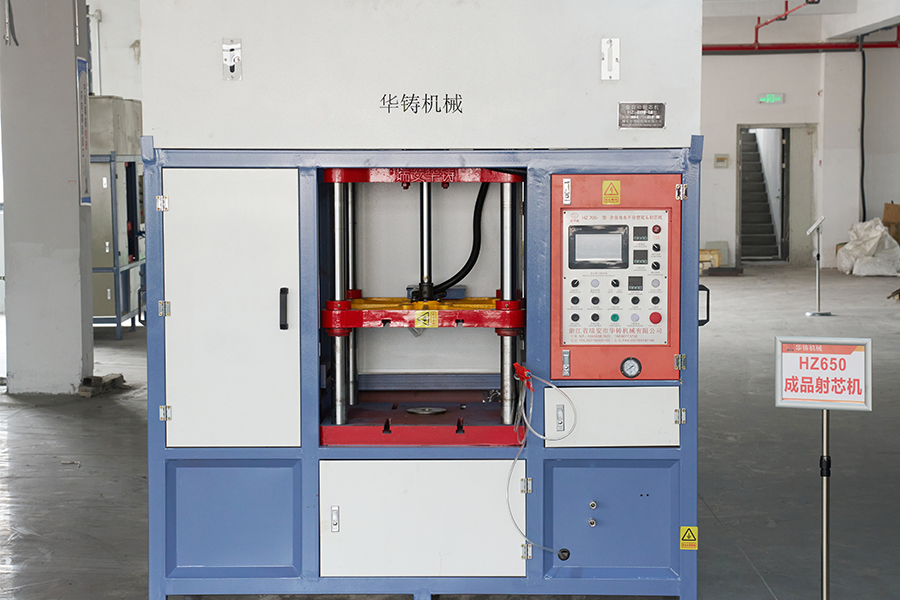The Evolution of Core Shooting Technology: Automatic Shell Core Shooting Machines
Industry News-The automatic shell core shooting machine represents a significant leap forward in the technology used for producing core components in casting. This machine is designed to create shell cores, which are used to form hollow sections in casting molds. Shell cores are typically made from materials like sand or ceramic that are coated with a thin layer of metal. The automatic shell core shooting machine automates the entire process of forming these cores, significantly improving both the efficiency and consistency of core production.

The working principle behind automatic shell core shooting machines involves a high-speed, precise injection of core sand into a mold cavity. The machine's advanced automation allows for the accurate mixing of sand and binder, followed by the controlled injection of the mixture into the shell mold. The core is then hardened through a combination of heat and pressure, ensuring that it retains the correct shape and density.
One of the key benefits of automatic shell core shooting machines is their consistency. Unlike manual core production methods, which can vary from one operator to another, automated machines ensure uniform quality across all cores produced. These machines also reduce labor costs and improve production speed, making them highly valuable for high-volume casting operations where time and quality are of the essence.
Additionally, these machines can produce highly complex cores with intricate shapes and fine details, which are often required in modern industrial applications such as automotive and aerospace manufacturing. The precision and reliability offered by automatic shell core shooting machines contribute to higher-quality castings and fewer defects, ultimately improving the overall efficiency of the casting process.
The double station core shooting machine is another innovative advancement in core production technology that enhances both productivity and versatility. As the name suggests, this machine features two stations, each capable of performing the core shooting process simultaneously. This dual-station design allows for a continuous, uninterrupted production cycle, which significantly increases throughput and reduces cycle times in high-volume manufacturing environments.
A typical double station core shooting machine consists of the following key components:
Shooting Mechanism: This is the core part of the machine that is responsible for injecting the core sand mixture into the mold. The shooting mechanism is designed to provide consistent and accurate sand injection, ensuring that the core is formed with the correct dimensions and density.
Station Hoppers: Each station of the double station machine has its own hopper, which stores the sand and binder mixture. The hopper is connected to the shooting mechanism, and it ensures that the right amount of material is available for each shot. The hopper may also feature automatic mixing systems to ensure the correct consistency of the core sand mixture.
Core Box Clamping System: The clamping system holds the mold or core box in place during the core shooting process. This system ensures that the core box remains securely positioned, even under the pressure of high-speed injection. The clamping system is designed to handle the forces exerted during the process and ensure that the mold does not shift or deform.
Cooling and Hardening System: After the core is formed, the machine uses a cooling system to solidify and harden the core. This system ensures that the core maintains its shape and strength before being removed from the machine. The cooling process is carefully controlled to prevent distortion and ensure the core is ready for use in the casting process.
Control Panel: The control panel is the central hub for operating the double station core shooting machine. It allows operators to monitor and adjust various parameters such as the amount of binder used, shot speed, and temperature. The control panel also enables automated operation, improving efficiency and reducing human error.
The double station design of this machine provides several advantages. By using two stations, the machine can work in parallel, with one station preparing the next core while the other is being shot and hardened. This reduces downtime between cycles and increases the overall production rate. Double station core shooting machines are ideal for industries that require a high throughput of consistent, high-quality cores, such as those found in automotive manufacturing, heavy machinery production, and industrial equipment.
 En
En
 русский
русский Español
Español عربى
عربى Deutsch
Deutsch















